
The HSHSL will be closed Saturday, May 29 – Monday, May 31 in honor of Memorial Day.

601 West Lombard Street
Baltimore MD 21201-1512
Reference: 410-706-7996
Circulation: 410-706-7928

The HSHSL will be closed Saturday, May 29 – Monday, May 31 in honor of Memorial Day.
Blog post researched and written by Spring 2021 HSHSL Intern, Elizabeth Brown. Elizabeth is a student of the Masters of Library and Information Science program at the University of Illinois, Urbana-Champaign. She recently completed an internship at the HSHSL working with the Historical Collections.
The Health Sciences and Human Services Library Historical Collections’ strives to provide broad access to our diverse collections both in person and digitally. Materials in our collections appear as they originally were published or created and may contain offensive or inappropriate language or images and may be offensive to users. The University of Maryland, Baltimore does not endorse the views expressed in these materials. Materials should be viewed in the context in which they were created.
The case of the missing apparatus:
On March 29, 1822 a minor but interesting scandal was recorded. From the University of Maryland Faculty Minutes 1812 – 1839[1] (page 14):
“D Hoffman Esq & Drs Pattison & Howard to attend were appointed a committee with instructions to make an arrangement with the representative of Monsieur Mercier of the firm late of this city ‘Decaves & Mercier’ relative to a debt of Five thousand Dollars due by him to the University of Maryland. This being the amount of a bill of exchange entrusted to him for the purchase of Chemical & Philosophical apparatus in Paris [crossed out] whether he was then going. and [sic] of the amount of which he defrauded the University.”
To wit: the University entrusted $5000 (the equivalent of $113,195 today[2]) to a French company in order to buy scientific, laboratory equipment in Paris but the person who they trusted to make the purchase took the money and ran. The faculty formed a committee to try to recover what they were owed, although the results of their efforts isn’t recorded.
But what were “Chemical & Philosophical apparatus” at that time?
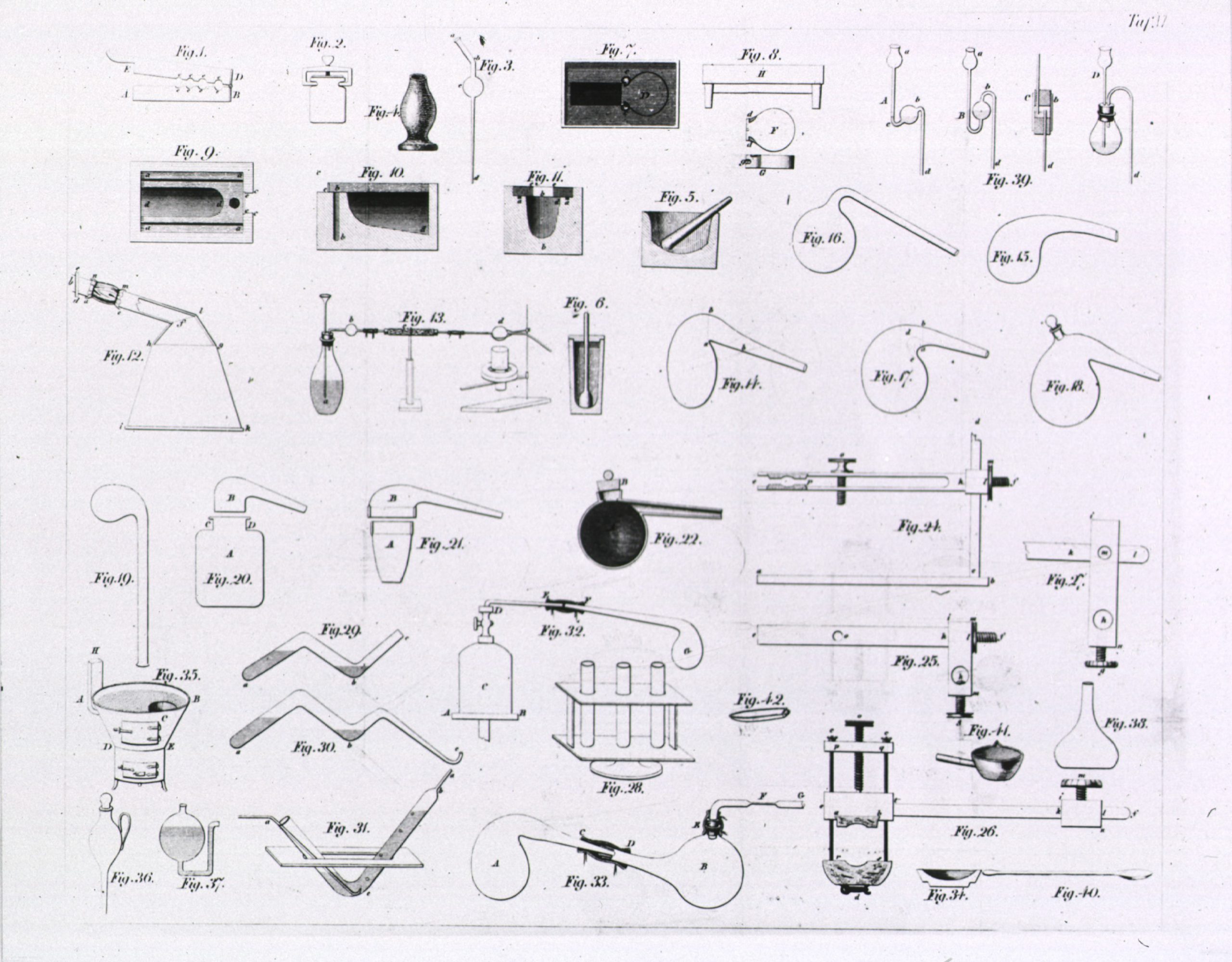
Contemporaneous examples of the chemical equipment are illustrated in The Rudiments of Chemistry by Samuel Parkes (1823)[3] along with instructions on the equipment’s use for demonstrating chemical theorems and how they could be applied on matter as it was understood at the time. These include glassware that was frequently created for distilling purposes such as retorts, bladders, and funnels.
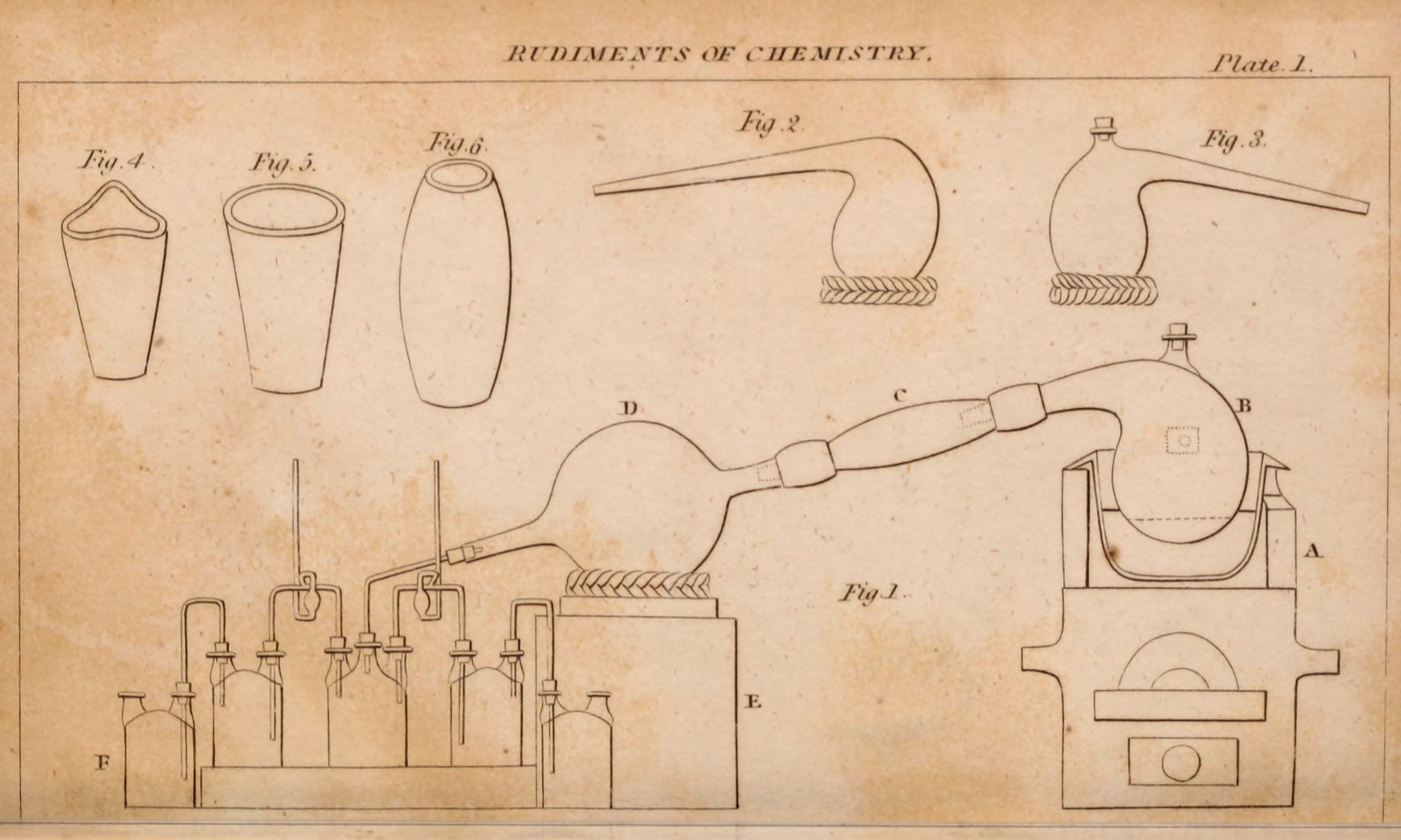
“Philosophical apparatus” referred to scientific equipment used for conducting experiments in other, often newly-developing, fields of science such as astronomy and electricity. Examples can be seen in Catalogue of the philosophical apparatus, minerals, geological specimens &c by Charles Daubeny (1861)[4] and in A catalogue of philosophical, astronomical, chemical and electrical apparatus by Joseph M Wightman (1846) [5].
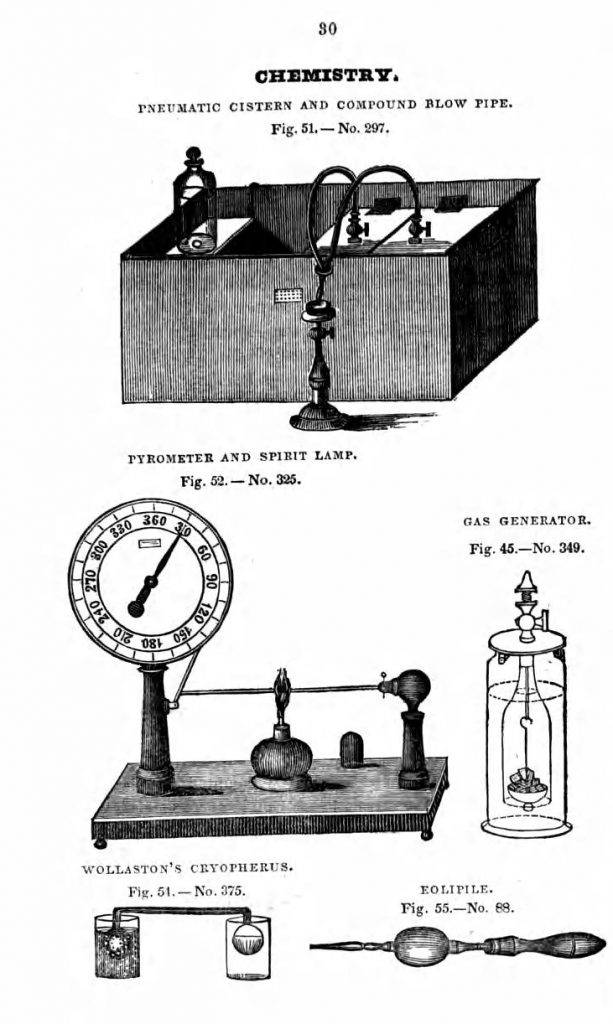 Numerous purchases of “apparatus” are recorded in Eugene Cordell’s histories of the University of Maryland[6] including an initial sum of $50,000 ($752,941 in today’s currency[7]) endowed for the purpose of buying “chemical and scientific apparatus and anatomical preparations” (Cordell 31) when the University was established by Acts of the state legislature 1814. This collection grew incrementally over time, with different faculty purchasing equipment to use for demonstration purposes in their lectures and occasionally donating their personal collections to the University. Eventually enough materials were amassed that the collections became distinguished as “Chemical apparatus” budgeted for $8300 ($238,965 modern currency[8]) in 1830 (Cordell 68).
Numerous purchases of “apparatus” are recorded in Eugene Cordell’s histories of the University of Maryland[6] including an initial sum of $50,000 ($752,941 in today’s currency[7]) endowed for the purpose of buying “chemical and scientific apparatus and anatomical preparations” (Cordell 31) when the University was established by Acts of the state legislature 1814. This collection grew incrementally over time, with different faculty purchasing equipment to use for demonstration purposes in their lectures and occasionally donating their personal collections to the University. Eventually enough materials were amassed that the collections became distinguished as “Chemical apparatus” budgeted for $8300 ($238,965 modern currency[8]) in 1830 (Cordell 68).
Cordell mentions how an “immense galvanic apparatus” (Cordell 189) created by Chemistry Professor Elisa DeButts[9] was brought out for demonstration when General Lafayette, the French aristocrat and acclaimed military officer in the American Revolutionary War, paid a ceremonial visit to the University in 1824.
An 1838 course catalog for the School of Medicine boasts[10]:
“The Chemical and Philosophical apparatus of this University is of great extent and value, much of it having been selected in Europe by the late distinguished Professor Debutts. And to a Laboratory, provided with every thing necessary for a course of Chemical Instruction, are united the numerous and varied articles required to illustrate the lectures on Pharmacy and Materia Medica. Neither expense nor care has been spared to secure for the University of Maryland, the facilities necessary for the acquisition of thorough Medical Education.”
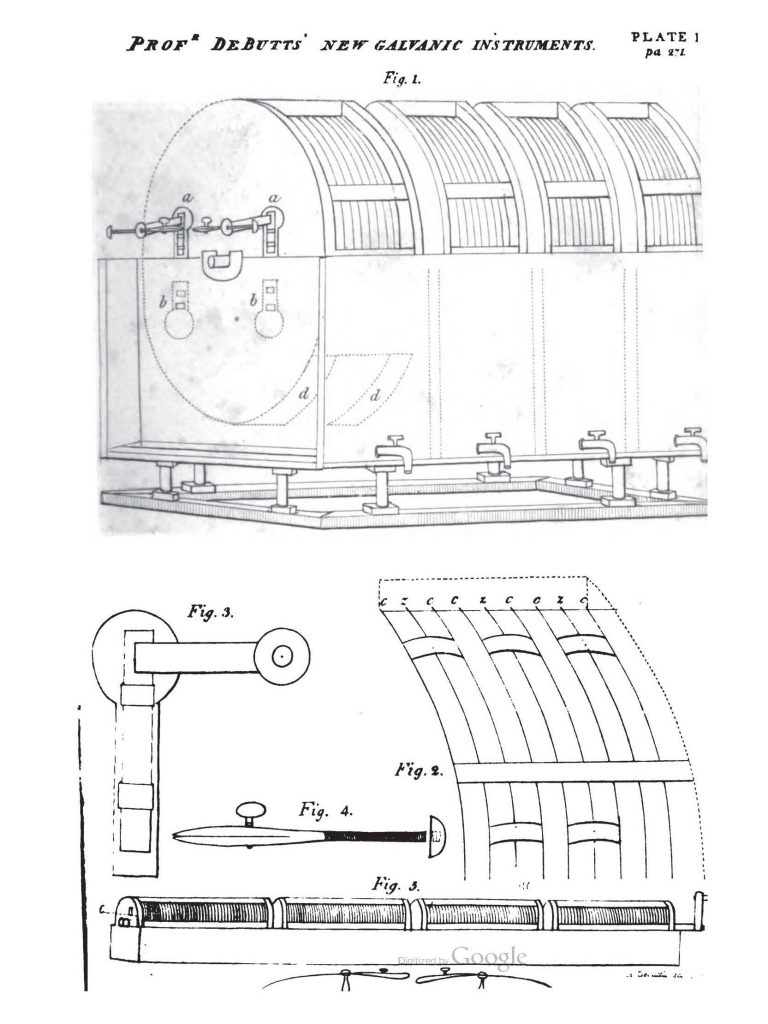 The school also purchased equipment to remain up to date on new technologies and to provide more advanced levels of classes for its students as the school grew in size, stature, and scope. Joseph Roby, the chair of Anatomy between 1842 and 1860, is cited as the earliest teacher to incorporate the use of microscopes into his lectures. (Cordell 230) Classes which trained students on using microscopes eventually became a required part of the syllabus in 1895. (Cordell 432) The value of experiential learning is described in the 1844-1845 course catalog describing Professor William E A Aikin’s course on Chemistry and Pharmacy: “The apparatus in this department is believed to be unequalled by that of any other Institution, an affords every possible facility for teaching a science which can only be taught by experiment.”[11]
The school also purchased equipment to remain up to date on new technologies and to provide more advanced levels of classes for its students as the school grew in size, stature, and scope. Joseph Roby, the chair of Anatomy between 1842 and 1860, is cited as the earliest teacher to incorporate the use of microscopes into his lectures. (Cordell 230) Classes which trained students on using microscopes eventually became a required part of the syllabus in 1895. (Cordell 432) The value of experiential learning is described in the 1844-1845 course catalog describing Professor William E A Aikin’s course on Chemistry and Pharmacy: “The apparatus in this department is believed to be unequalled by that of any other Institution, an affords every possible facility for teaching a science which can only be taught by experiment.”[11]
But the equipment wasn’t considered valuable just for its educational uses. Cordell recounts several instances of equipment being stolen, including this instance in 1837:
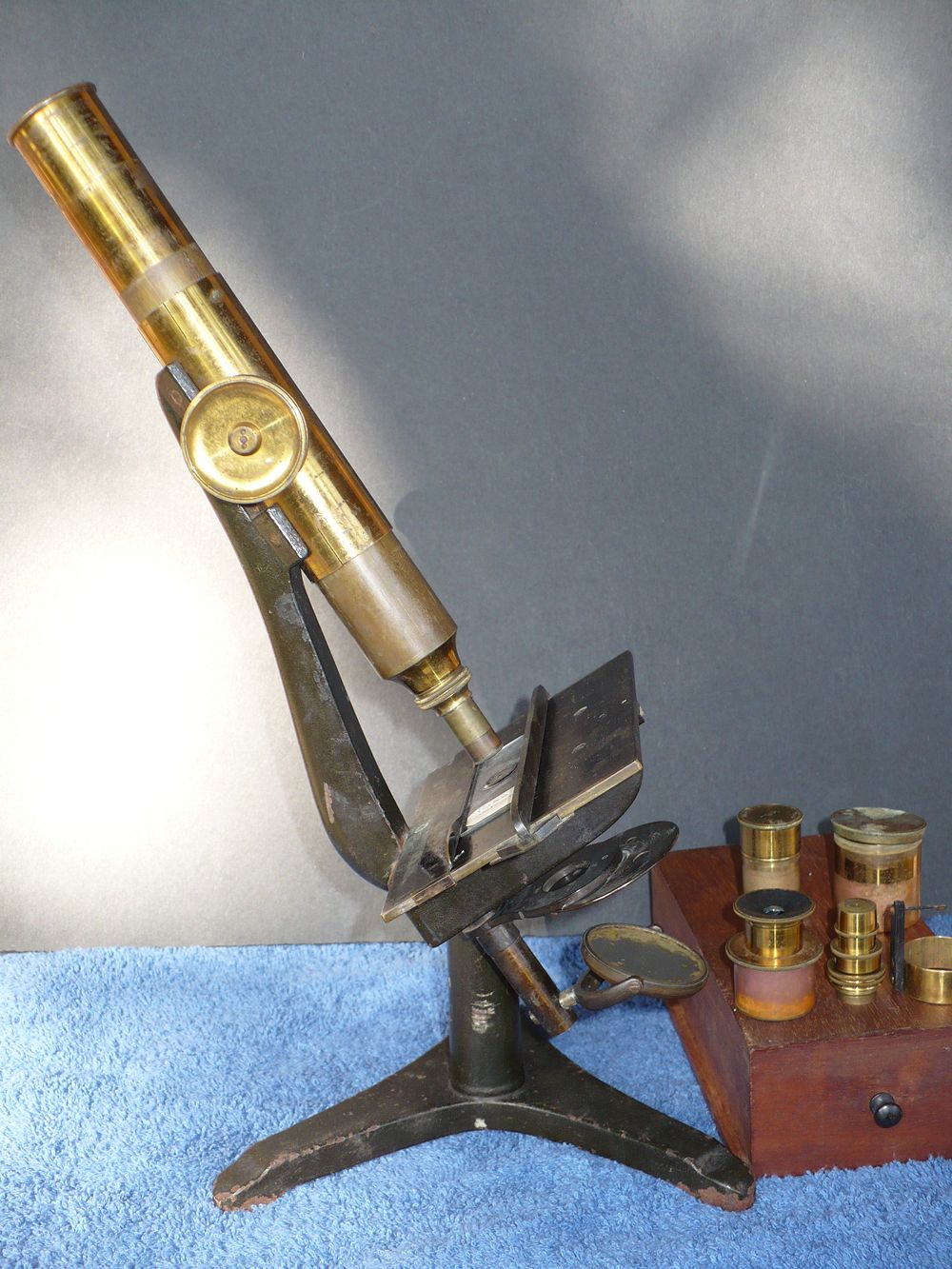 “They [University faculty and staff] found some articles missing from the Museum which had been claimed by members of the Regents’ Faculty as private property. They also found in one of the rooms of his house three vessels that had contained liquors, and a coarse bowie-knife made out of part of an old sword, which one of the young men afterwards called for…” (Cordell 81)
“They [University faculty and staff] found some articles missing from the Museum which had been claimed by members of the Regents’ Faculty as private property. They also found in one of the rooms of his house three vessels that had contained liquors, and a coarse bowie-knife made out of part of an old sword, which one of the young men afterwards called for…” (Cordell 81)
While the specialized glassware remained rare, it was kept locked up in the classrooms and laboratories as much as possible to prevent such cases of theft and misuse. With time, the materials that were being purchased would eventually become easier to make and acquire, allowing for less restrained access. The same year microscopy became a required part of the syllabus, Cordell notes: “The Chemical Laboratory previously open chiefly for class instruction, was so arranged as to give students an opportunity for individual work at any hour of the day, under the guidance of Professor Daniel Base…” (Cordell 432)
Eventually the materials become so accessible that they were transformed from “chemical apparatus” to “chemistry sets”- an educational toy sold to children.[12] [13] [14]
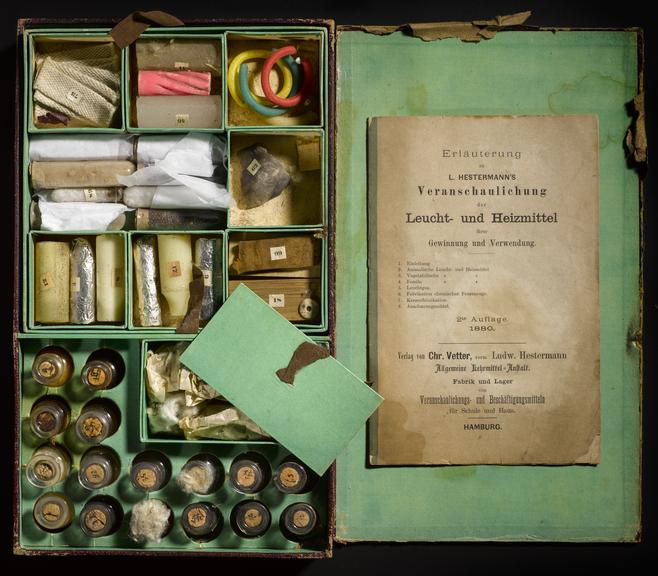 Footnotes:
Footnotes:
[1] University of Maryland Faculty Meeting Minutes 1812 – 1839. Available at: https://archive.hshsl.umaryland.edu/handle/10713/6322
[2] CPI Inflation Calculator. Available at: https://www.officialdata.org/us/inflation/1822?amount=5000
[3] Parkes, Samuel. (1823) The rudiments of chemistry; illustrated by experiments and copper-plate engravings of chemical apparatus. Available at: https://archive.hshsl.umaryland.edu/handle/10713/3080
[4] Daubeny, Charles. (1861). Catalogue of the philosophical apparatus, minerals, geological specimens, & c. in the possession of Dr. Daubeny, Praelector of natural philosophy in Magdalen college, and now deposited in the building contiguous to the Botanic gardens, belonging to that society. https://www.biodiversitylibrary.org/bibliography/28100
[5] Wightman, Joseph M. (1846) A catalogue of philosophical, astronomical, chemical and electrical apparatus. Available at: https://library.si.edu/digital-library/book/cataloguephilos00wigh
[6] Cordell, Eugene F. (1907) University of Maryland, 1807-1907, its history, influence, equipment and characteristics, with biographical sketches and portraits of its founders, benefactors, regents, faculty and alumni. Available at: http://hdl.handle.net/10713/12583
[7] CPI Inflation Calculator. Available at: https://www.officialdata.org/us/inflation/1814?amount=50000
[8] CPI Inflation Calculator. Available at: https://www.officialdata.org/us/inflation/1830?amount=8300
[9]“Mechanics, Physics, Chemistry, and the Arts.” (1824) The American Journal of Science and Arts. Available at: https://www.google.com/books/edition/The_American_Journal_of_Science_and_Arts/ZEBSAQAAMAAJ?hl=en&gbpv=1&dq=galvanic+apparatus+elisha+debutts&pg=PA271&printsec=frontcover
[10] University of Maryland, School of Medicine Catalog 1838-1880. Available at: http://hdl.handle.net/10713/2619
[11] University of Maryland, School of Medicine Catalog 1838-1880. Available at: https://archive.org/details/medicine37unse/page/n82/mode/1up?q=Apparatus
[12] Cook, Rosie. (April 6, 2010) “Chemistry at Play.” Science History Institute. Available at: https://www.sciencehistory.org/distillations/chemistry-at-play
[13] Zielinski, Sarah. (October 10, 2012) “The Rise and Fall and Rise of the Chemistry Set.” Smithsonian Magazine. Available at: https://www.smithsonianmag.com/science-nature/the-rise-and-fall-and-rise-of-the-chemistry-set-70359831/
[14] “Playing with Science: A Brief History of the Chemistry Set.” (May 15, 2019). Science Museum. Available at: https://www.sciencemuseum.org.uk/objects-and-stories/chemistry/playing-science-brief-history-chemistry-set

Due to a scheduled update, online resources such as databases and journals may be unavailable Monday, May 24, 2021 starting at 8pm. The outage is expected to last for approximately 2 hours.
Contact the Information Services desk for help at 410-706-7995 or hshsl@umaryland.edu.

In this issue:
Blog post researched and written by Spring 2021 HSHSL Intern, Hanna Takemoto. Hanna is a new graduate of the MLIS program at the University of Maryland, College Park. She recently completed an internship at the HSHSL where she worked on a collection of 19th century School of Medicine dissertations.
The Health Sciences and Human Services Library Historical Collections’ strives to provide broad access to our diverse collections both in person and digitally. Materials in our collections appear as they originally were published or created and may contain offensive or inappropriate language or images and may be offensive to users. The University of Maryland, Baltimore does not endorse the views expressed in these materials. Materials should be viewed in the context in which they were created.
As the world continues to grapple with the relentless coronavirus, vaccines remain the most promising tool in our arsenal. In fact, we are in the midst of what can be described as the most ambitious vaccination effort in human history. The unprecedented speed of the Covid-19 vaccine development has been a source of pride and hope, but also anxiety. According to the latest estimates by the U.S. Census Bureau, 15% of Americans do not plan on getting vaccinated against Covid-19. When we consider the successful vaccination campaigns of the 20th century that eradicated polio, tuberculosis, and measles, vaccine hesitancy may seem like a modern phenomenon fuelled by the online spread of misinformation. However, students at the University of Maryland’s School of Medicine were writing about vaccine hesitancy as early as 1825. In his dissertation titled “Vaccination”, soon-to-be Doctor of Medicine Robert Stuart McKaig argued that:
Although the history of vaccination has been but the history of its uniform and ascendant progress over all obstacles, whether of ignorance, prejudice or avarice, still there have always been those who, unwilling or unable to survey the whole subject, have preferred to rely on their own limited experience of a few doubtful cases and reject the boon of Jenner rather than yield assent to a mass of evidence such as has rarely, if ever, been accumulated in any other department of human investigation.
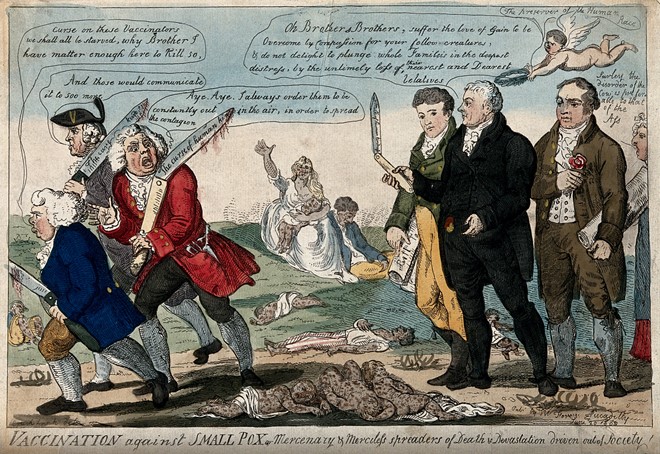
“The boon of Jenner” refers to the 1796 discovery of the smallpox vaccine by the English doctor Edward Jenner. Before its eradication in 1980, smallpox was one of the oldest and most deadly communicable diseases. The earliest evidence of a smallpox death dates back to 1157 B.C. and the fatality rate was between 25 and 30%. Those who survived were often left scarred or even blind.
Inoculation against smallpox had been common in China, the Middle East, and parts of Africa for centuries, and eventually made its way to Great Britain and New England. Variolous material from an infected person would be introduced into the body of a healthy one in order to induce a milder form of the disease and subsequent immunity. The practice reduced mortality rates significantly, but still carried the risk of severe infection. An 1835 graduate, Frederick Butler, wrote in “Inaugural Dissertation on Vaccination” that:
The lovely and fair still shuddered, lest theirs might be the countenance to bear the impression of deformity: and still willing to hold out their arm to the injecting puncture, rather than risk the danger of the natural disease.
Edward Jenner’s vaccine was safer because it used material from a cow infected with cowpox, a similar but much milder disease (the word vaccine is derived from the Latin word for cow, vacca). Frederick Butler explains:
It had been long observed before this discovery was made known, that certain persons connected with dairys [sic, dairies] in Great Britain were not susceptible of small pox, either natural or by inoculation. And also that these persons were previously affected with a singular kind of pustular soreness caught from milking cows whose udder exhibited the same pustular appearence. These facts were remarked as coincidency, yet no general inference had been drawn from them until Dr. Jenner, investigating the disease of the kine on the spot, came to the conclusion that this disease of the cow might be communicated and would secure the person who had received it from the action of small pox.
The smallpox vaccine was introduced to Baltimore in 1800 by John Crawford, a physician who briefly taught at the University of Maryland and whose book collection became the foundation for HSHSL.
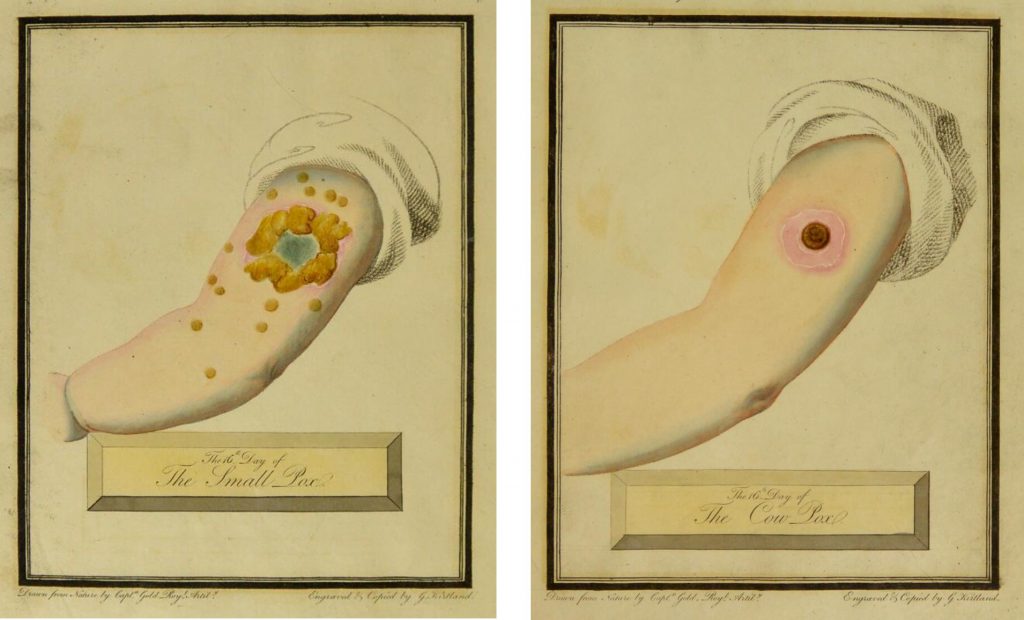
Although Dr. Jenner was probably not the first person to try inoculation with the cowpox virus, his contributions were groundbreaking because he carefully formulated his hypothesis and tested it through well-documented experiments and observations. His approach was reminiscent of today’s evidence-based medicine and laid the foundations for the development of other effective vaccines. The following passage from Charles Wesley Parker’s 1828 essay “Cow-pox as a Preventive of Small-pox” rings remarkably true in 2021:
The discovery of a remedy in the prevention of so loathsome and fatal disease as that of small pox, may justly be ranked among the first in any age and in any science. In the preservations of human life, and in the alleviation of human suffering, this discovery stands unrivalled, and is justly entitled to be placed at the head of that long list of discoveries of which the medical profession can boast.
Indeed, the impressive efficacy of the smallpox vaccine, developed at a time when epidemiology was still in its infancy, is a testament to the power of immunization. Vaccines have saved millions of lives around the world and continue to protect our communities from dangerous diseases. We owe it to the vaccine pioneers, the future generations, and to ourselves to make good use of this discovery. To find a Covid-19 vaccine near you, go to: www.vaccinefinder.org
Sources and further reading
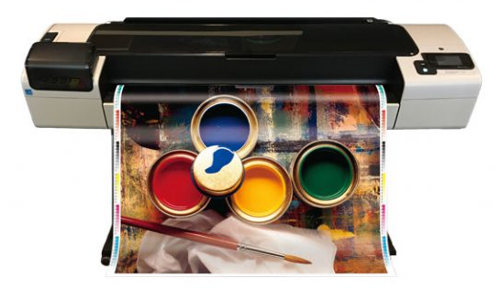
The HSHSL offers poster printing to all UMB faculty, students, and staff and University of Maryland Medical Center staff. Posters are printed in support of academic, professional, and research purposes.
Posters are printed up to a maximum of 42″ x 72″.
You have your choice of material:
Poster printing may take up to two business days, please plan accordingly.
All posters must be submitted as a PDF file. Please pay close attention to the information on sizing and formatting your poster.
Posters can be picked up at the Information Services Desk.
For questions, please e-mail poster@hshsl.umaryland.edu or call 410-706-7996.
The Health Sciences and Human Services Library Historical Collections’ strives to provide broad access to our diverse collections both in person and digitally. Materials in our collections appear as they originally were published or created and may contain offensive or inappropriate language or images and may be offensive to users. The University of Maryland, Baltimore does not endorse the views expressed in these materials. Materials should be viewed in the context in which they were created.
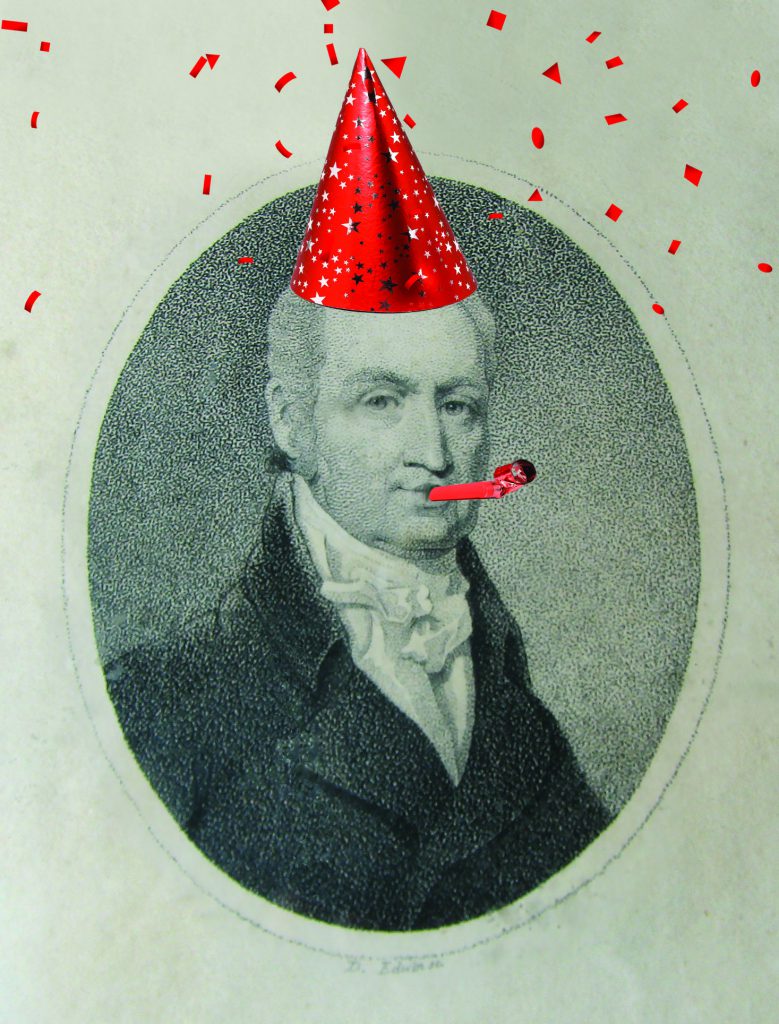 May 3, 2021 marks 275 years since the birth of Dr. John Crawford, an influential figure for the HSHSL. His impressive collection of medical texts was purchased by the School of Medicine’s Faculty of Physik for $500 from his daughter Eliza Godefroy after his death in 1813. The volumes founded the medical library, which was believed to be the first associated with a school of medicine. Today the HSHSL dates its foundation to 1813 and the purchase of this collection. Dr. Crawford’s volumes remain an important part of the HSHSL’s collections; the 569-volume John Crawford Collection sits in a place of prominence in the Historical Collections’ reading room and represents medical texts from 1565 in English, Latin, French, German, and Dutch. Most of the texts in the Crawford Collection have been digitized and are available in the UMB Digital Archive.
May 3, 2021 marks 275 years since the birth of Dr. John Crawford, an influential figure for the HSHSL. His impressive collection of medical texts was purchased by the School of Medicine’s Faculty of Physik for $500 from his daughter Eliza Godefroy after his death in 1813. The volumes founded the medical library, which was believed to be the first associated with a school of medicine. Today the HSHSL dates its foundation to 1813 and the purchase of this collection. Dr. Crawford’s volumes remain an important part of the HSHSL’s collections; the 569-volume John Crawford Collection sits in a place of prominence in the Historical Collections’ reading room and represents medical texts from 1565 in English, Latin, French, German, and Dutch. Most of the texts in the Crawford Collection have been digitized and are available in the UMB Digital Archive.
Dr. John Crawford was born in Ireland on May 3, 1746. He was educated at Trinity College of Dublin and earned his M.D. from the University of Leyden. He began his medical career as a surgeon sailing with the East India Company.
Dr. Crawford came to the United States in 1796, settling in Baltimore, Md. While in Baltimore, Dr. Crawford introduced the practice of vaccinating for smallpox (1800) and helped to establish the Baltimore Dispensary, which opened in 1801. That same year, Dr. Crawford, a long-standing Mason, was elected Grand Master of the Masonic Order in Maryland, a position he held until his death.
In 1807, Crawford published a series of works on the “Theory and Application to the Treatment of Disease.” In these publications, he outlined his theory, established while working in Dutch Guiana, that diseases were caused by animalculae (insects or worms). This theory was an early example of germ theory and was not well received by the medical community and was ultimately rejected by his colleagues. Undeterred, Dr. Crawford continued to study the theory until his death.
In 1811, he commissioned the treatise A Lecture Introductory to a Course of Lectures on the Cause, Seat and Cure of Diseases. Proposed to be delivered in the City of Baltimore, which became the foundation for a series of lectures given at his home in the fall of 1811. In 1812, Crawford became lecturer on Natural History at the University of Maryland, Baltimore, and served in that capacity until his death on May 9, 1813.
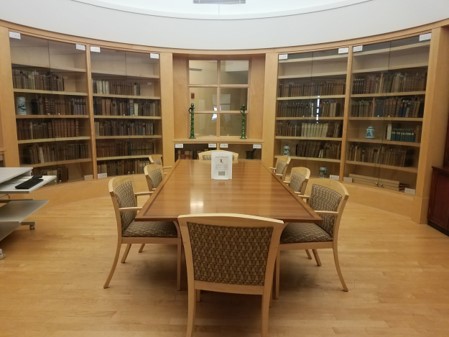
Further Reading:
The Center for Data and Bioinformation Services (CDABS) is the University of Maryland Health Sciences and Human Services Library hub for data and bioinformation learning, services, resources, and communication.
CDABS is excited to announce that UMB has recently signed a Data Use Agreement with NCATS N3C Data Enclave, making this rich source of COVID clinical data from across the country available to UMB researchers.
The National COVID Cohort Collaborative (N3C) Data Enclave was launched by the National Center for Advancing Translational Sciences (NCATS) and the National Center for Data to Health (CD2H), in partnership with experts from Observational Health Data Sciences and Informatics (OHDSI), PCORnet, the Accrual to Clinical Trials (ACT) network, and TriNetX. The N3C aims to aggregate, harmonize, and make accessible vast amounts of clinical data nationwide to accelerate COVID-19 research and clinical care. With the uncertainty of the COVID-19 global pandemic, the scientific community and the Clinical and Translational Science Awards (CTSA) Program created the N3C as a partnership to overcome technical, regulatory, policy, and governance barriers to harmonizing and sharing individual-level clinical data.
The N3C Data Enclave supports collaborative analytics across a broad range of clinical and translational domains, such as acute kidney injury, diabetes, pregnancy, cancer, immunosuppression, social determinants of health, and many other conditions to target treatment mechanism, drug discovery, and best care practices for COVID-19. The N3C Data Enclave opened on September 2, 2020 and now has over 5 billion rows of data on more than 4 million patient records, including over 1 million COVID positive patients.
There are three tiers of data available with different restrictions and requirements for access. From most to least restricted these are: Limited, De-identified, and Synthetic. Check out the N3C data governance page for more details on these tiers. In order to maintain adequate security, row-level data must remain in the enclave, but many tools are provided to researchers for working with the data from within the platform.
To see what others are doing with N3C data, visit the projects page.

Account creation may take a few days. You will also need to complete the NIH Information Security and Information Management Training course and, if you wish to access the limited or de-identified datasets, submit evidence of having completed a Human Subjects Research Protection training course.
Once you obtain access to the Enclave, you will need to submit a Data Use Request for each specific project you intend to do. If you would like to use the limited dataset, you will need to submit a copy of your IRB determination letter as well. For more details on requirements, please see the onboarding checklist.
Visit the tutorials page for basics on using the N3C platform. There are additional training modules available within the Enclave. And of course, do not hesitate to reach out to your friendly, neighborhood CDABS team with any questions!
Questions? Contact: Amy Yarnell, Data Services Librarian and Jean-Paul Courneya, Bioinformationist – at data@hshsl.umaryland.edu.
To read more of our content and stay informed please visit our communications page and use the form to subscribe: https://www2.hshsl.umaryland.edu/cdabs/communications
The Health Sciences and Human Services Library Historical Collections’ strives to provide broad access to our diverse collections both in person and digitally. Materials in our collections appear as they originally were published or created and may contain offensive or inappropriate language or images and may be offensive to users. The University of Maryland, Baltimore does not endorse the views expressed in these materials. Materials should be viewed in the context in which they were created.
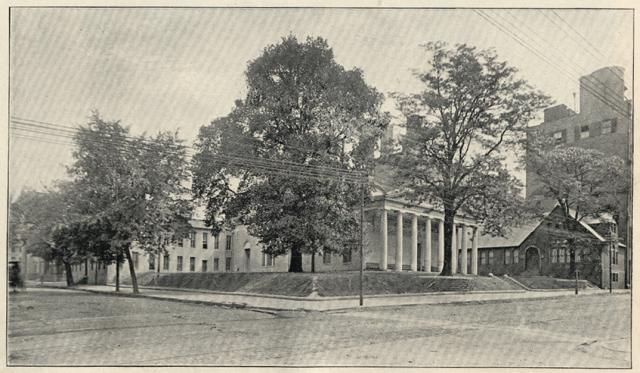
Davidge Hall stands as the oldest continuously used medical education building in the United States. It was added to the National Register of Historic Places in 1997 and stands as both a Baltimore and University landmark. For the majority of the building’s over 200-year history, a nearly 80 foot English Elm, known as the Davidge Elm, stood next to it becoming another symbol for the strength and successes of the University of Maryland, Baltimore.
The Davidge Elm is believed to have been planted sometime around the time of the building of Davidge Hall. The cornerstone for Davidge Hall was laid on April 7, 1811 on land that was then on the outskirts of the city of Baltimore purchased from Colonel John Eager Howard in 1808. The first instruction in the building took place in October 1812 and the building was completed in 1813, costing roughly $40,000.
Other reports suggest the Elm was planted in 1728 marking the boundary of Colonel Howard’s estate. However, these reports are probably referring to a different historic Baltimore Elm, known as the Rochambeau tree, which stood on the corner of Mulberry and Charles Streets. The Rochambeu Tree was also part of the Howard estate and was unfortunately cut down due to disease in July 1987.
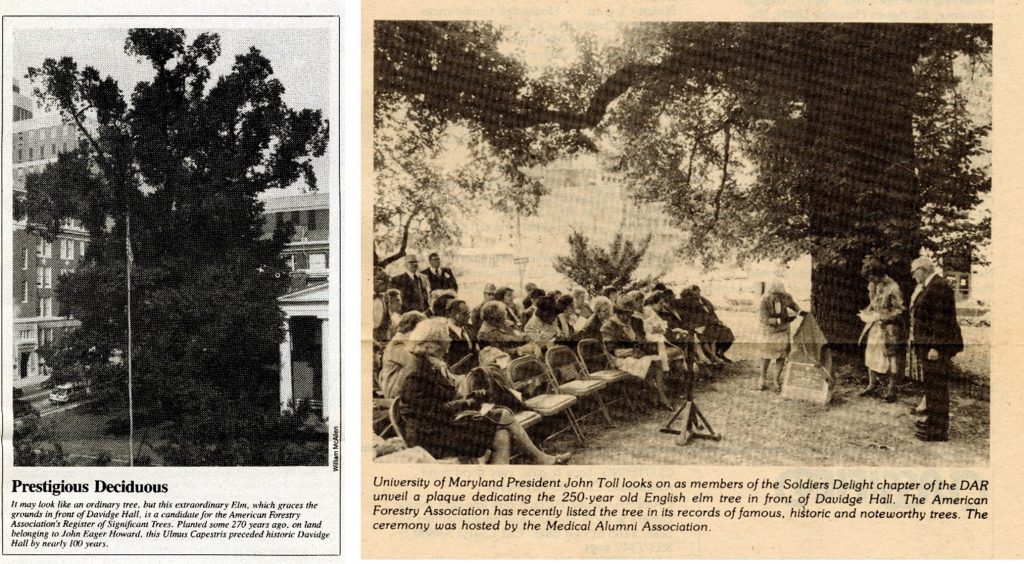
Regardless of when it was planted, the Davidge Elm, was a beloved campus landmark. The tree witnessed numerous historic events and was listed in the American Forestry Association of Washington, D.C.’s list of famous historical and noteworthy trees in 1989. Additionally, the Davidge Elm was chosen as the symbol for UMB in 1996 for the First Founder’s Day celebration. Since that time the Elm remains an important figure on campus though the tree itself was removed in 2001 when it was deemed unsafe due to age and disease.
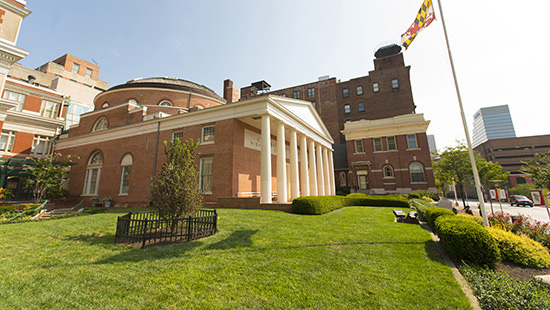
Today, a new, smaller English Elm tree stands next to Davidge Hall. The sapling was planted during a ceremony as part of the 200th Anniversary of Davidge Hall. The new tree was donated by Richard L. Taylor, School of Medicine Class of 1975, and his wife Kathie; it was grown from seeds taken from the original Davidge Elm tree. During the same year (2012) a metal sculpture, depicting the original Davidge Elm, created by Anatoliy Rudik, a Ukrainian master blacksmith, and Dr. Bruce Jarrell, was installed in the second-story window of the Southern Management Corporation Campus Center. This sculpture looks to ensure that a Elm Tree remains a permanent feature on UMB’s campus.
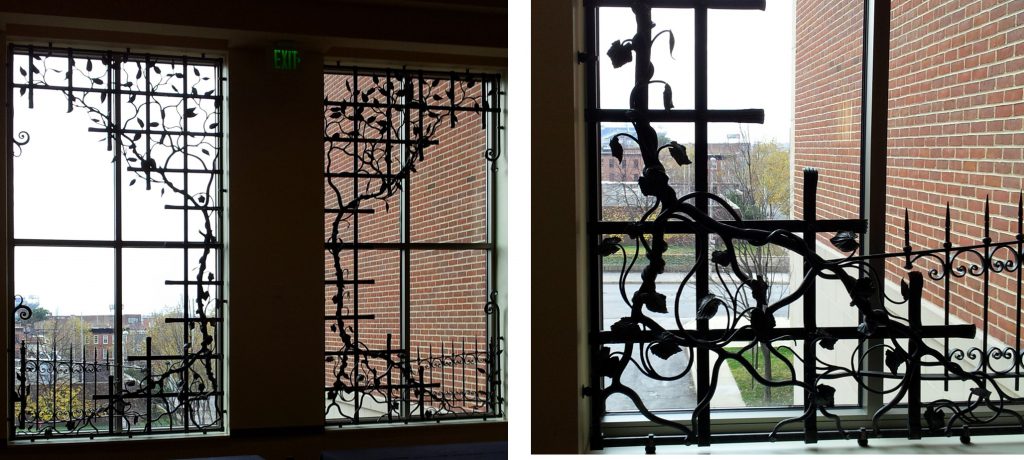
Sources and Further Reading:

Each school has a librarian dedicated to working with its faculty, staff, and students!
What your librarian can do for you:
To find out who your school’s librarian is or schedule an online meeting with them, visit our Make an Appointment page.